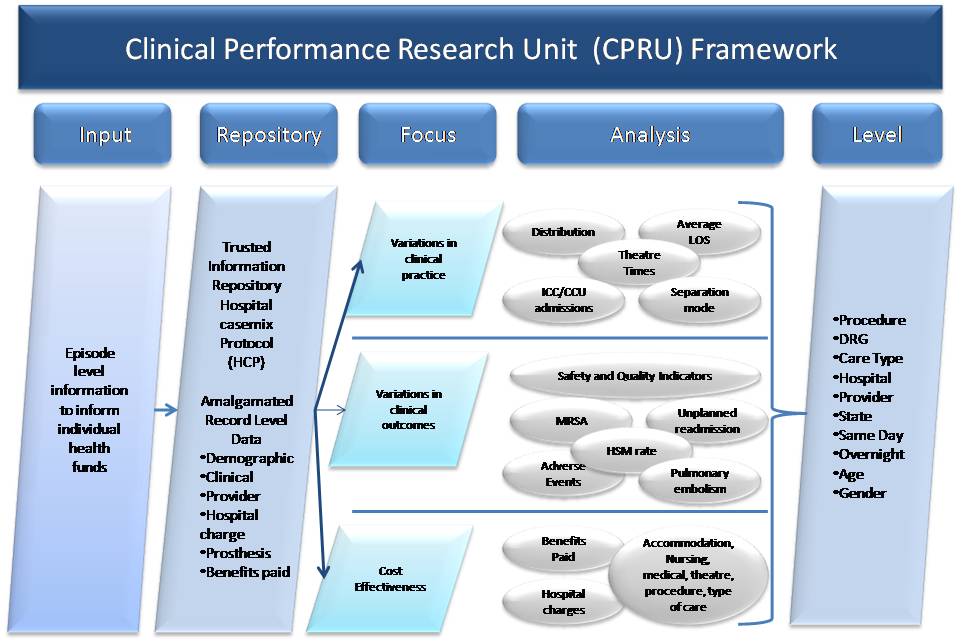Private Healthcare Australia (PHA) is focused on enhancing the value of private health insurance through safety and quality mechanisms and the CPRU aims to support decision making through:
- Analysing variations in clinical practice outcomes
- Monitoring Safety and quality of clinical services
- Identifying unwanted variations by measuring under-use, overuse or misuse of provider treatments
- Benchmarking
- Monitoring affordability
- Measuring capacity
- Enhancing completeness and integrity of data
Reports for members funds
PHA produces reports for member funds which focus on the private health membership, coverage, benefits and utilisation as well as on clinical outcomes and performance of the private sector as part of the industry’s commitment to better health, better care and better outcomes.
Hospital Casemix Protocol
PHA has developed a framework for analysis of Hospital Casemix Protocol (HCP) episode level data to focus on:
- Variations in clinical practice
- Variations in clinical outcomes
- Cost effectiveness
HCP data allows for detailed analysis of safety and quality indicators such as unplanned re-admissions to hospital, hospital acquired infections and hospital standardised mortality rates.
PHA developed a Safety and Quality Framework to assist the private health insurance industry with their contract negotiations with private hospitals and day procedure centres. Its aim was to establish a systematic approach to monitoring and measuring outcomes associated with the safe delivery of healthcare services provided within the private sector and ensure private hospitals were engaged in quality improvement programs throughout the patients’ continuum of care.
Ultimately the strategic intent of the framework is to maintain the confidence of the consumer – that the delivery of healthcare services is continually monitored, assessed and modified.
PHA Quality and Safety Framework
Strategic intent and purpose
Executive Summary
The initial construct of the Quality and Safety framework document initially outlines the key performance indicators associated with good clinical governance.
The framework is based on the principles from AS/NZ 4360 on Risk Management; evidence based clinical research and development, best practice guidelines, accreditation requirements and industry standards.
The Quality and Safety document will provide all key stakeholders with a framework by which healthcare facilities and health insurance funds ensure consumers are provided with optimum clinical care and services when entering the health system.
The criteria within the document will also guide and enhance the hospitals ability to demonstrate their commitment to quality improvement.
Internal and external comparison and benchmarking reports can be obtained and used to validate and measure clinical performance.
Accreditation performance is based on the quality and safety criteria established through this working document.
It would be expected that current accreditation organisations would be able to demonstrate their ability to meet industry expectations.
Clinical risk indicators are to form part of the core mandatory criteria for hospitals and Day Procedure Centres under an established reporting structure to their respective health insurance provider.
The indicators described at this stage, outline the processes and systems to identify, analyse and control risks in relation to patient quality and safety.
The framework document includes consumer participation in relation to, the effectiveness, appropriateness and access to health services.
The deliverables from the Quality and Safety Framework will enable all participants to benefit in better patient care outcomes, performance recognition, financial rewards and be involved in a sustainable healthcare environment.

